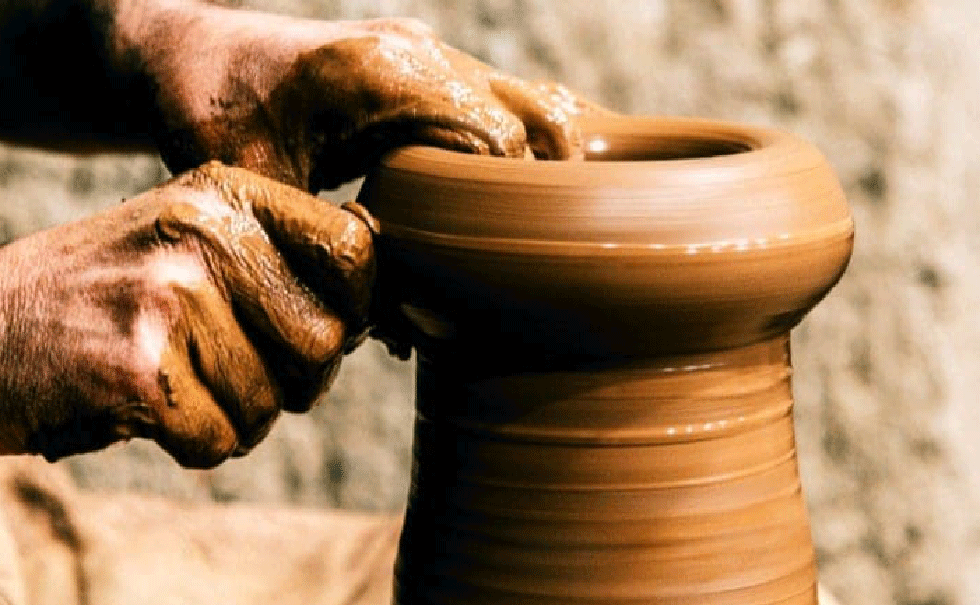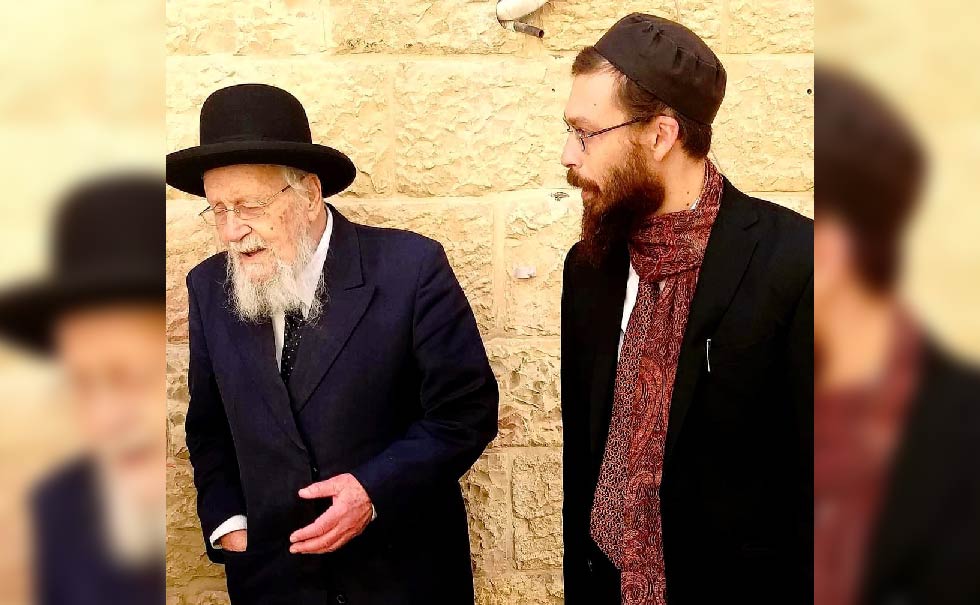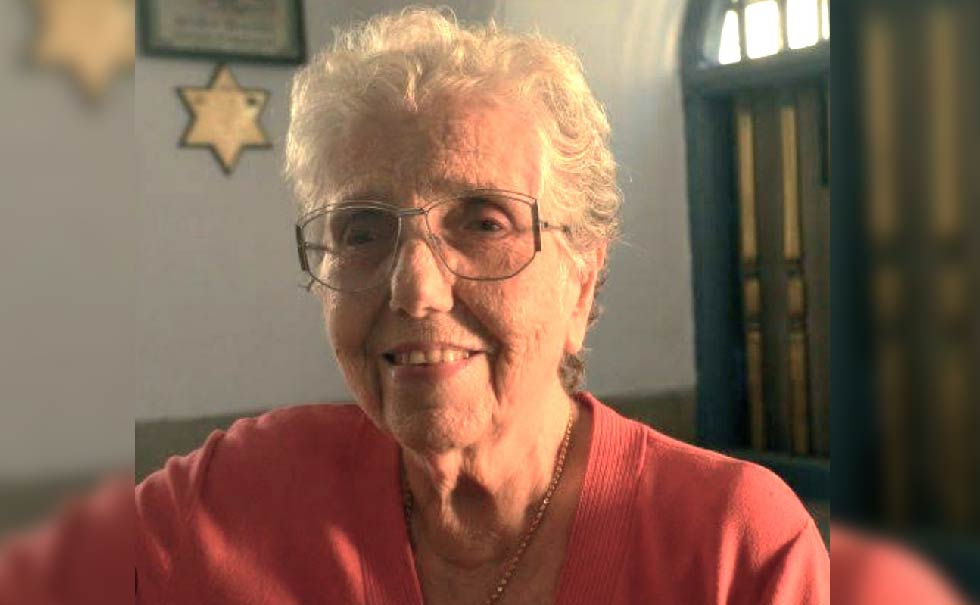We Are the Clay
[1]וְעַתָּ֥ה יְהֹוָ֖ה אָבִ֣ינוּ אָ֑תָּה אֲנַ֤חְנוּ הַחֹ֙מֶר֙ וְאַתָּ֣ה יֹצְרֵ֔נוּ וּמַעֲשֵׂ֥ה יָדְךָ֖ כֻּלָּֽנוּ׃
“But now, O LORD, You are our Father; We are the Clay, but You are the Potter,
We are all (only) the work of Your hands.”
Clay has been used since the dawn of history and has some surprisingly modern applications, its usage has been crucial for the development of civilization and unsurprisingly it is also used as a metaphorical device in almost every culture.
There are references to clay throughout the Tanach beginning with Genisis: [2]
וַיִּ֩יצֶר֩ יְהֹוָ֨ה אֱלֹהִ֜ים אֶת־הָֽאָדָ֗ם עָפָר֙ מִן־הָ֣אֲדָמָ֔ה וַיִּפַּ֥ח בְּאַפָּ֖יו נִשְׁמַ֣ת חַיִּ֑ים וַֽיְהִ֥י הָֽאָדָ֖ם לְנֶ֥פֶשׁ חַיָּֽה׃
Hashem, God formed man from the dust of the earth, and He blew in his nostrils the breath of life, and the man became a living soul.
Some modern scholars[3] suggest that the Pottery Wheel was first invented by the Sumerians in Mesopotamian during the chalcolithic period[4] in which we see some of the first examples of painted pottery, primitive copper tools, and more elaborate burial rites for the dead; suggesting complex religious practices and advanced social culture. An example of a basic wheel was discovered in the ancient city of Ur (now modern-day Iraq) and has been dated to around 3129 BCE.
Clay aside from being used to create utensils was also the first writing medium, examples of cuneiform tablets which appear from around 3200 BCE, the tablets would encompass many languages such as Sumerian, Akkadian, Elbaite, Elamite, Hittite, Hurrian, Luwian, Urartian, Old Persian, Palaic, and others.
The Egyptians also had a creation narrative involving the Potter’s Wheel; the Egyptian deity Khnum[5][6], was considered the principal God of the Nile, he was believed to have been the creator of the bodies of children from clay turned on his celestial wheel which he would then place into their mothers’ wombs, he was later described as having molded the other popular Egyptian deities and was called “Divine Potter” and “Lord of created things from himself” amongst his many honorable titles, he was held chiefly responsible for the annual flooding of the Nile which made irrigation and agriculture possible in Ancient Egypt.
Khnum was worshipped in Egypt for more than 3000 years between the 1st Dynasty (2925-2775BCE) until the early Common Era. Pharaoh Khufu began the first Giza pyramid project, circa 2550 B.C. His Great Pyramid is the largest in Giza is approximately 481 feet (147 meters) above the plateau, Khufu’s actual name was Khnum-Khufu meaning “Khnum protects me” and [7] he was also known under his Hellenized name[8] “Khêops” or “Cheops” and less well known as “Súphis[9]”.
Some other uses of clay from antiquity include:
Pharmaceutical formulations
Oral health applications.
Topical applications for wounds.
Gastrointestinal protectors: specifically that the microbes within the clay could be used to help absorb toxins, so many support eating clay as a way of relieving stomach issues, such as food poisoning, this is known as geophagy[10] and still occurs in a variety of locations worldwide.
Clay was used to perform dyeing on cloth and hair, typically a clay with higher levels of oxidized iron was selected for this purpose and often mixed with other natural ingredients roots, berries, bark, leaves, and wood, fungi, and even blood.
Cosmetics such as clay masks from bentonite clay are still used and their ancient usage is well documented aside from the use of clay as an ingredient in other cosmetic items such as eyeshadows and ritualized religious face paints.
However for us, as students of the Torah the symbolism of clay urges another important lesson that is all too often forgotten;
We are not fixed in our being but rather remain malleable according to our will:
In cases of posttraumatic stress disorder [11] a person will often become fixed in a specific moment of trauma and have recurrent, involuntary, and intrusive distressing memories of the traumatic event that may express themselves in dreams, dissociative reactions (e.g., flashbacks), and also avoidance of the stimuli that prompt feelings of return to trauma aside from a wide range of other diagnosable issues.
This experience does not apply only to profound trauma but also to our day-to-day lives; we become fixed in our experience of who we are and what our purpose is, or rather, should be.
The human condition of free will (בחירה חופשית) is considered as a fundamental truth by the Torah, it is the prerequisite to moral choice, legal culpability, and the actualization of personal responsibility to better ourselves and this world.
We are warned repeatedly by the Torah not to fall into the trap of worshipping idols; concrete images of the Gods in physical representation, it is also often our existential issue to fall into the flaw of worshipping our own idols of self:
From the moment we arise in the morning we are creators; we create ourselves anew.
We sit, metaphorically, at the potter’s wheel and become co-creators with Hashem.
Our form may be fixed, as is our personal history of the deeds we have done, as it were, etched into eternity, however, one powerful truth remains: we can choose what to do with who we are and where we find ourselves.
This idea is expressed within the daily liturgy, from the moment we arise we first thank Hashem for the gift of life that we have been given on this new, special day with the Modeh Ani prayer.
We then wash and sanctify our hands; the essential philosophy of the Torah is not only of trust in the Divine but of a much harder paradigm; the belief in human beings.
We must create a just society of interconnected individuals who must act in a righteous manner, this is the goal of the Torah and of Law as a philosophical venture.
As the surgeon must trust their scalpel, the artist the brush, and the craftsman their tools we too must trust that which both symbolically and literally holds the tools of this world; ourselves [12]:
מִֽי־יַעֲלֶ֥ה בְהַר־יְהֹוָ֑ה וּמִי־יָ֝קוּם בִּמְק֥וֹם קׇדְשֽׁוֹ׃
דנְקִ֥י כַפַּ֗יִם וּֽבַר־לֵ֫בָ֥ב אֲשֶׁ֤ר ׀ לֹא־נָשָׂ֣א לַשָּׁ֣וְא נַפְשִׁ֑י וְלֹ֖א נִשְׁבַּ֣ע לְמִרְמָֽה׃
“Who may ascend the mountain of the LORD? And who may stand in His holy place?
He who has clean hands and a pure heart, who has not sworn a false oath.”
Ultimately our inner self, our hearts, that which we hold as most sacred is left up to ourselves to guard, preserve and develop. This is the bitter-sweet truth of spirituality, the gains and progressions are left entirely to ourselves to achieve, only we can perceive our own life lessons – and all too often we miss the lesson and end up in cycles of negative experience until we reach self-awareness and the conclusion of what our response should be; many of us may wish secretly that we could return to a younger self and tell them of the wisdom that would spare them from pain, hardships, and difficulty (even though the more immature self would unlikely listen to such good advice!)
We then progress through our morning blessings and say[13]:
…אֲשֶׁר יָצַר אֶת הָאָדָם בְּחָכְמָה… “…Who formed man with wisdom…”
We accept that this human machine is a marvel, when it works it is a miracle should it falter our lives end. We then move progressively through becoming aware of being created, we then mention the soul and that our experience is ultimately finite, the experience of being will end[14]:
…אֱלֹהַי, נְשָׁמָה שֶׁנָּתַתָּ בִּי טְהוֹרָה, אַתָּה בְרָאתָהּ, אַתָּה יְצַרְתָּהּ, אַתָּה נְפַחְתָּהּ בִּי, וְאַתָּה מְשַׁמְּרָהּ בְּקִרְבִּי
“My God, the soul that you placed within me is pure[15]. You created it, You formed it, You breathed it into me, and You preserve it within me.”
We then mention our intellectual capacity to notice dichotomies expressed as the understanding of the difference between day and night, we bless our eyes that we are able to see and our general needs.
These blessings of thanks to Hashem accompany each and every stage of waking and signify the ability of the intellect to process our experience as a gift.
The Rambam[16] rules that all Birkot HaShachar (morning blessings) must be recited exactly as mentioned in the Talmud, each Brachah in its appropriate time as individual experiences dependent on action.
However, the Meiri[17] and a few other Rishonim disagree and see them as created for a general principle as we make usage of the necessities of this world, and thus the widespread custom (aside from some Yemenite Jews) is to recite all of Birkot HaShachar together regardless of experiencing the specific factors that prompt these blessings[18].
Further to this is the idea that we wish to recite these morning blessings in the most respectful way possible, with clean hands and while properly dressed in a manner befitting prayer, and therefore we delay the recital of the blessings until full prepared and recite them in the Synagogue together[19].
This idea of being composed of clay is beautifully expressed by the prophet Jeremiah[20] in a plea for us to change ourselves lest we undergo difficult exiles and punishments from Hashem designed to reformulate us as a nation [21]:
וָאֵרֵ֖ד בֵּ֣ית הַיּוֹצֵ֑ר (והנהו) [וְהִנֵּה־ה֛וּא] עֹשֶׂ֥ה מְלָאכָ֖ה עַל־הָאׇבְנָֽיִם׃
וְנִשְׁחַ֣ת הַכְּלִ֗י אֲשֶׁ֨ר ה֥וּא עֹשֶׂ֛ה בַּחֹ֖מֶר בְּיַ֣ד הַיּוֹצֵ֑ר וְשָׁ֗ב וַֽיַּעֲשֵׂ֙הוּ֙ כְּלִ֣י אַחֵ֔ר כַּאֲשֶׁ֥ר יָשַׁ֛ר בְּעֵינֵ֥י הַיּוֹצֵ֖ר לַעֲשֽׂוֹת
וַיְהִ֥י דְבַר־יְהֹוָ֖ה אֵלַ֥י לֵאמֽוֹר׃
הֲכַיּוֹצֵ֨ר הַזֶּ֜ה לֹא־אוּכַ֨ל לַעֲשׂ֥וֹת לָכֶ֛ם בֵּ֥ית יִשְׂרָאֵ֖ל נְאֻם־יְהֹוָ֑ה הִנֵּ֤ה כַחֹ֙מֶר֙ בְּיַ֣ד הַיּוֹצֵ֔ר כֵּן־אַתֶּ֥ם בְּיָדִ֖י בֵּ֥ית יִשְׂרָאֵֽל׃
“So I went down to the house of a potter and found him working at the wheel.
And if the vessel he was making was ruined, as can happen to clay in the potter’s hands, he would make it into a different vessel, as he saw fit to make.
Then the word of Hashem came to me saying:
Can I not deal with you like this House of Israel? —says the Hashem.
Behold just like clay in the hands of the potter, so thus are you House of Israel in My hands.
We ultimately must take responsibility for our own self-forming, to choose actively who we wish to be and become, to return to this introspection regularly: we alone have the responsibility to form the vessel of self.
According to the Kabbalistic sources[22], this vessel formed of clay, called in Hebrew כְּלִי is an acronym for the Jewish people using each of the letters to spell out:
כּהֵן, לֵוִי, ישראל (Cohen, Levi, Israel) – it is Israel’s unique destiny[23] to be lifted out of the mechanisms of normal providence and to deal directly with Hashem without an intermediary force.
Idols take the form of specific shapes made from wood, stone, metal, and clay – they are fashioned by man in the manner he wishes to suit his purpose, his needs; ultimately to fulfill his desires. Equally possible is it to take on mantles, titles, descriptions of self that achieve exactly that – we become safe when we identify as part of a cohesive group, we cling to them as a form of self-identification because the truth is more uncomfortable;
Before Hashem each of us stands exactly as He made us and we are asked what we have made of ourselves, what did we do with the conditions, environment, specific gifts, and challenges that were never gifted to anyone in existence ever before us: we cannot hide behind loose affiliations such as “orthodox”, “reform”, “religious”, “secular”, we cannot attempt to define ourselves by creed, color, race or gender; we stand naked before Hashem of all of these social constructs, divested of uniforms, hats or designation.
We have only our deeds and the person we have chosen to become, our choices are our own personal potter’s wheel.
May we be blessed to form ourselves wisely with the clay Hashem has given us.
Rabbi Jonathan Goldschmidt 2021 ©
—————————————————-
[1] Isaiah 64:7
[2] Genisis 2:7
[3] Kramer, Samuel Noah (1963). The Sumerians: Their History, Culture, and Character. Chicago, Illinois: University of Chicago Press. p. 290. ISBN 0-226-45238-7.
[4] The Chalcolithic, a name derived from the Greek: χαλκός khalkós, “copper” and from λίθος líthos, “stone” or Copper Age, also known as the Eneolithic or Aeneolithic is an archaeological period which researchers now regard as part of the broader Neolithic.
[5] Wilkinson, Richard H. The Complete Temples of Ancient Egypt. Thames and Hudson, 2000. ISBN 0-500-05100-3
[6] Shaw, Ian. The Oxford History of Ancient Egypt. Oxford University Press. 2000. ISBN 0-19-280458-8
[7] Rosalie F. Baker, Charles F. Baker: Ancient Egyptians: People of the Pyramids (Oxford Profiles Series). Oxford University Press, 2001, ISBN 0195122216, (page 33).
[8] Greek: Χέοψ, by Diodorus and Herodotus
[9] Greek: Σοῦφις, by Manetho
[10] Geophagia, also known as geophagy, is the intentional practice of eating earth or soil-like substances such as clay, chalk, or termite mounds. It occurs in many non-human animals and has been documented in more than 100 primate species.
[11] (PTSD) is a psychiatric disorder that may occur in people who have experienced or witnessed a traumatic event such as a natural disaster, a serious accident, a terrorist act, war/combat, or rape or who have been threatened with death, sexual violence, or serious injury. (Diagnostic and Statistical Manual of Mental Disorders, 5th Edition: American Psychiatric AssociationDSM-5)
[12] Psalms: 24:3-4
[13] Liturgy: Morning Blessings.
[14] Ibid.
[15] Talmud: Berachot: 60b
[16] Rambam: Misneh Torah: Hilchot Tefilla 7:4-9
[17] Meiri on Talmud Berachot 60b.
[18] Shulchan Aurech: Orach Chayim 46:8
[19] Ibid: 46:2 – it should be noted there that other factors exist contributing to the public recital of these blessings.
[20] Jeremiah 18:3-6
[21] Literally: “on the stones” – explained to mean סְדָנָא by Targum Yonatan, Rashi there further expresses the word as פורמא”ש “Formes” in Old French – Rabbi Marcus Jastrow understands סְדָנָא to mean “the potter’s block (wheel turned by hand” (Dictionary of the Targumim, Talmud Babli, Talmud Yerushalmi, and Midrashic Literature.)
[22] Attributed to the Arizal in several places.
[23] Ramchal: Derech Hashem: Chapter 2: On Israel and the Nations




